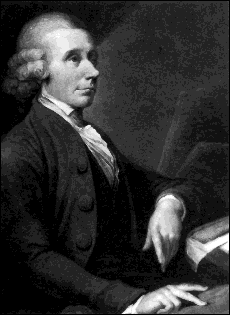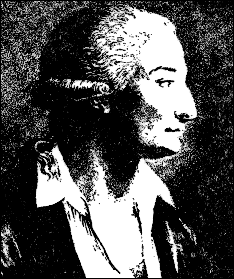
18th
century
The 1700s was the
age for new discoveries. Benjamin
Franklin (1706-1790) introduced the idea of expressing electric charge as a
result of gained or lost ‘electricity’, later defined as the electron.
This was inspired by Charles Francois de Cisternay du Fay (1698-1739),
who proposed ‘positive’ and ‘negative’ charge.
Alessandro Volta (1745-1827) then made the first electric battery and
electric current, which became the origin of electrochemistry, and suggested
that electricity governed chemical reactions in some way.
The mid 1700s also saw the
discovery of many new metals, including cobalt in 1730 by George Brandt
(1694-1768) and nickel in 1751 by Axel Fredric Cronstedt (1722-1765),
which shaped a new interest in what is now known as the transition metals.

A further breakthrough in chemistry was the discovery in the 1770s of nitrogen, hydrogen and oxygen, by Daniel Rutherford (1749-1819), Henry Cavendish (1731-1810) and Joseph Priestly (1733-1806) (see left) respectively. This was fundamental to biological chemistry.
Priestly: image reproduced from http://dbhs.wvusd.k12.ca.us/gallery/html
In addition, Cavendish’s most significant experiment was
burning hydrogen to form water vapour. Thus
since water was now shown to be a combination of two gases, the Greek theory of
the Elements had finally been disproved after an astonishing 2400 years!
Perhaps the most
influential chemist of the century was Antoine Laurent Lavoisier (1743-1794)
(see right),  who theorized about many subjects, most notably recognizing the need for
accurate and systematic measurements in chemistry, the discovery that diamond
was a carbon analogue, and of course defining the concept of the conservation of
mass. Later in 1789 he
devised a list of the 33 known elements. Lavoisier
had incorrectly included heat and light in this list, and a further 8 were later found to be
compounds, however he had inspired a great many chemists to organize their
findings, a quality which would later lead to the classification of elements
into periods and groups to form the periodic table.
who theorized about many subjects, most notably recognizing the need for
accurate and systematic measurements in chemistry, the discovery that diamond
was a carbon analogue, and of course defining the concept of the conservation of
mass. Later in 1789 he
devised a list of the 33 known elements. Lavoisier
had incorrectly included heat and light in this list, and a further 8 were later found to be
compounds, however he had inspired a great many chemists to organize their
findings, a quality which would later lead to the classification of elements
into periods and groups to form the periodic table.
Lavoisier: image reproduced from http://dbhs.wvusd.k12.ca.us/gallery/html
Back to home page